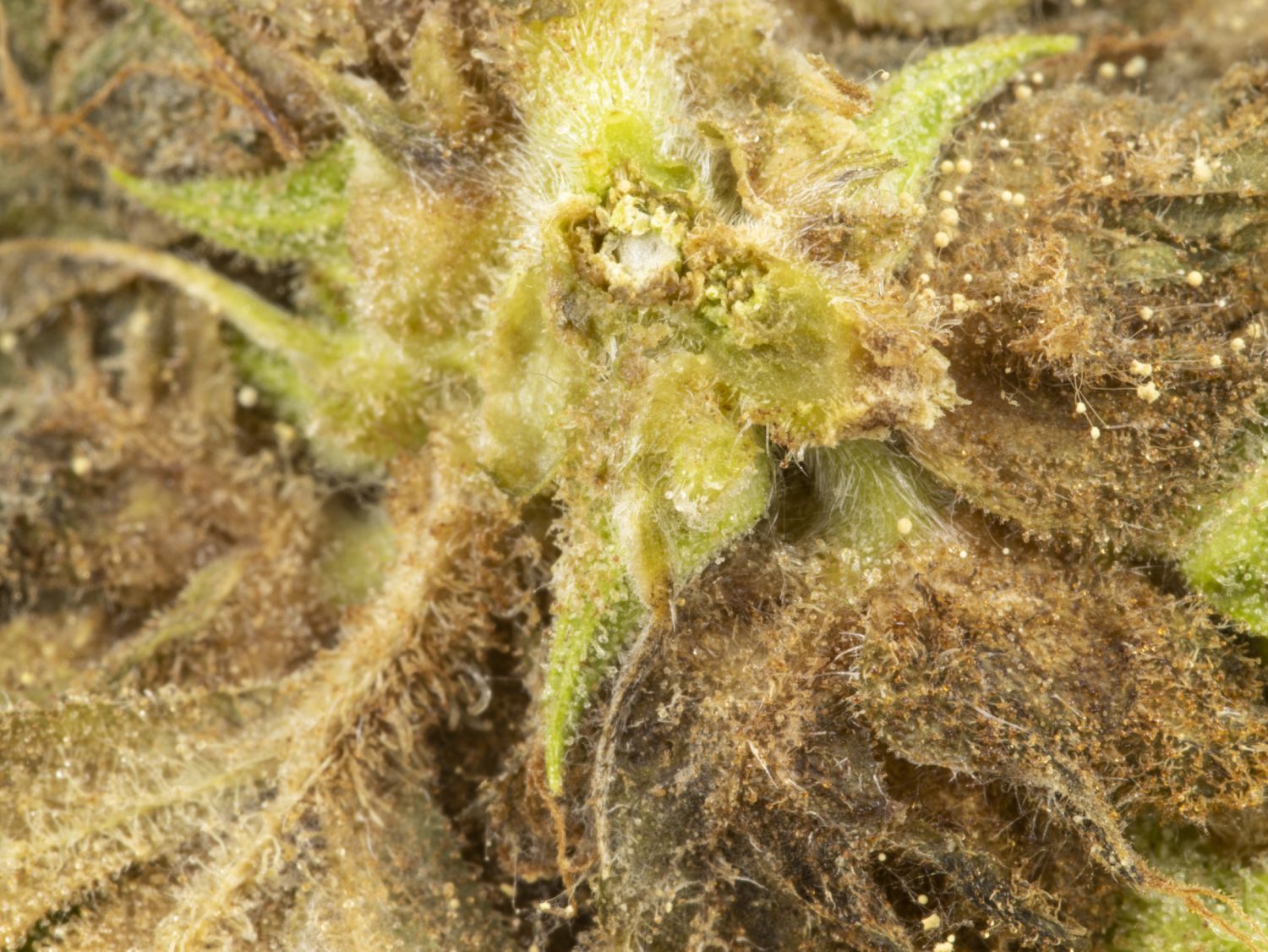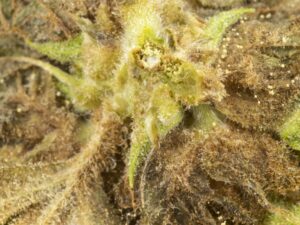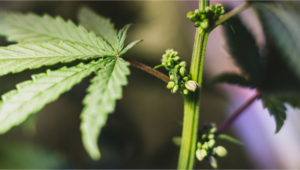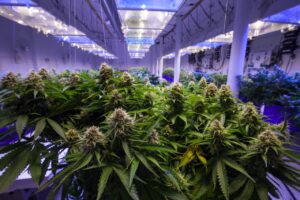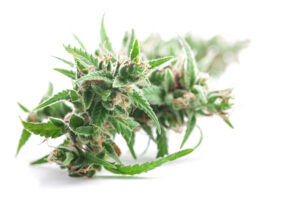The United States Department of Agriculture estimates that crop diseases cause $220 billion in crop losses every year. Cannabis is no exception. With thin margins and declining wholesale prices, cannabis growers simply can’t afford to lose crops to disease or even have them reduce yields.
Factors Contributing to Cannabis Disease
While cannabis is not inherently more susceptible to disease compared to other plants, the likelihood a plant will acquire a disease depends on a variety of factors such as environmental conditions, cultivation practices, and genetics.
Environmental Conditions
Any deviations from the optimal conditions for cannabis plants can increase their susceptibility to disease. For example, high humidity levels can create favorable conditions for fungal diseases like powdery mildew and botrytis. Similarly, poor soil drainage can leave plants susceptible to root diseases, such as Fusarium and Pythium.
Cultivation Practices
The way cannabis is grown can also influence its susceptibility to disease. For instance, overcrowding plants can restrict airflow, creating a conducive environment for fungal diseases. Overwatering or underwatering can stress the plant, weakening its natural defenses and making it more vulnerable to pathogens. Additionally, improper sanitation practices, such as using contaminated tools can spread disease throughout the cultivation environment. In fact, improperly sanitized tools are believed to be one of the main means of transmission of Hop Latent Viroid.
Genetic Factors
The genetic makeup of cannabis plants plays a significant role in their disease resistance. Some cannabis cultivars may possess natural resistance or tolerance to certain diseases, while others may be more susceptible. In fact, it’s not uncommon for cannabis growers to observe sick plants of one cultivar directly next to another cultivar that is unphased. Breeders often select for disease resistance traits when developing new cultivars to mitigate the risk of infections.
Preventing Cannabis Crop Diseases
The Ministry of Agriculture in British Columbia has recently issued a fact sheet detailing the symptoms and transmission of the most prevalent diseases impacting cannabis plants. Among these are Fusarium, Pythium, Powdery Mildew, Botrytis, and Hop Latent Viroid (HLVd). Many of these pathogens result in stunted growth, decreased yield, and potency reduction. Pythium, for instance, can even lead to plant demise.
It goes without saying that growers must take all necessary precautions to prevent infections and ensure a productive harvest. The fact sheet concludes with several recommendations for disease prevention in cannabis plants, including:
- Maintaining a hygienic grow environment.
- Regulating humidity and temperature levels..
- Treating irrigation water.
- Identifying and eliminating diseased plants promptly.
- Opting for disease-resistant cultivars.
- Using disease-free planting materials or cuttings.
Preventing diseases in cannabis plants requires a combination of proactive measures aimed at early identification, maintaining optimal growing conditions, practicing good sanitation, and implementing integrated pest management strategies. Here are some key steps to prevent cannabis diseases:
Start with Healthy Plants
You must begin cultivation with disease-free, high-quality seeds or clones from reputable sources. If you start with sick plants, none of the other suggestions on this list are going to do much to salvage your crop. The best way to ensure your plants are clean is to test them with qPCR detection assays designed to detect the most harmful cannabis diseases. Screening mother plants, seedlings, and incoming clones before they are introduced into the grow space is a great prevention strategy.
Optimize Growing Conditions
Ensure that environmental factors such as temperature, humidity, and airflow are within the optimal range for cannabis growth. Proper ventilation helps reduce humidity levels and prevent the buildup of moisture, which can contribute to the development of fungal diseases like powdery mildew and botrytis.
Provide Adequate Drainage
Use well-draining soil or growing mediums to prevent waterlogging and root rot. Ensure that containers have sufficient drainage holes and avoid overwatering, as soggy soil creates ideal conditions for root pathogens such as Pythium and Fusarium.
Practice Sanitation
Maintain cleanliness in the grow space by regularly sanitizing equipment, tools, and surfaces to prevent the spread of pathogens. Avoid cross-contamination between plants by using separate tools for each plant or disinfecting tools between uses. Contact with infected plant sap is the primary vector for Hop Latent Viroid transmission. Cultivators should always sterilize tools, equipment, and hands with a 10% bleach solution before starting work on a new plant.
Monitor Plant Health
Inspect plants regularly for any signs of disease, including discoloration, wilting, spots, or abnormal growth, and confirm infection with qPCR detection assays. Early detection allows for prompt intervention and containment of the disease before it spreads to other plants.
Implement Integrated Pest Management (IPM)
Develop a comprehensive IPM plan that includes cultural, mechanical, biological, and chemical control methods to manage pests and diseases effectively while minimizing environmental impact. This may involve using beneficial insects, natural predators, or organic pesticides as needed.
Maintain Proper Plant Spacing
Provide adequate spacing between plants to promote airflow and reduce humidity levels, which helps prevent the spread of fungal diseases. Crowded grow spaces create favorable conditions for pathogens to thrive and spread rapidly.
Select Disease-Resistant Cultivars
Choose cannabis cultivars known for their disease resistance or tolerance to common pathogens. Research breeders’ catalogs and consult with experienced growers to identify cultivars suitable for your specific growing conditions and disease risks.
Educate Yourself
Stay informed about common cannabis diseases, their symptoms, and management strategies through reputable sources, research publications, and online forums. Continuous learning enables growers to adapt and refine their disease prevention practices based on emerging threats and advancements in cultivation techniques.
The CannMed Events website is an excellent source for the latest information about cannabis plant pathogens, and the site has several videos of plant pathogen experts, including Dr. Zamir Punja
Ready to Start Testing Cannabis Plants for Diseases?
Several commercial growers have made investments in qPCR equipment and materials to enable them to do in-house tests for a range of genetic features, including plant sex and plant diseases.
PathoSEEK qPCR Detection Assays can identify plants infected with costly pathogens before they show any obvious signs of disease. From there, growers can:
- Destroy the infected plant before the disease can spread
- Treat the plant with biocontrol agents
- Attempt to create a disease-free copy of the plant through tissue culture
Screening plants with PathoSEEK qPCR Detection Assays in-house costs less than $8 per target, excluding the cost of equipment. However, growers who are not ready to make that investment can outsource testing to labs that offer plant pathogen testing as a service. Services for cannabis pathogen testing can range in price from $25 to $50 per plant, depending on the pathogens. Fill out the form below, and we’ll be pleased to put you in touch with one of those labs!
Prefer to Outsource Testing?
Growers who don’t have enough volume, lab experience, or start-up cash to test seedlings in-house can outsource to one of our partner labs. Complete the form below and we will connect you with a lab in your area.

